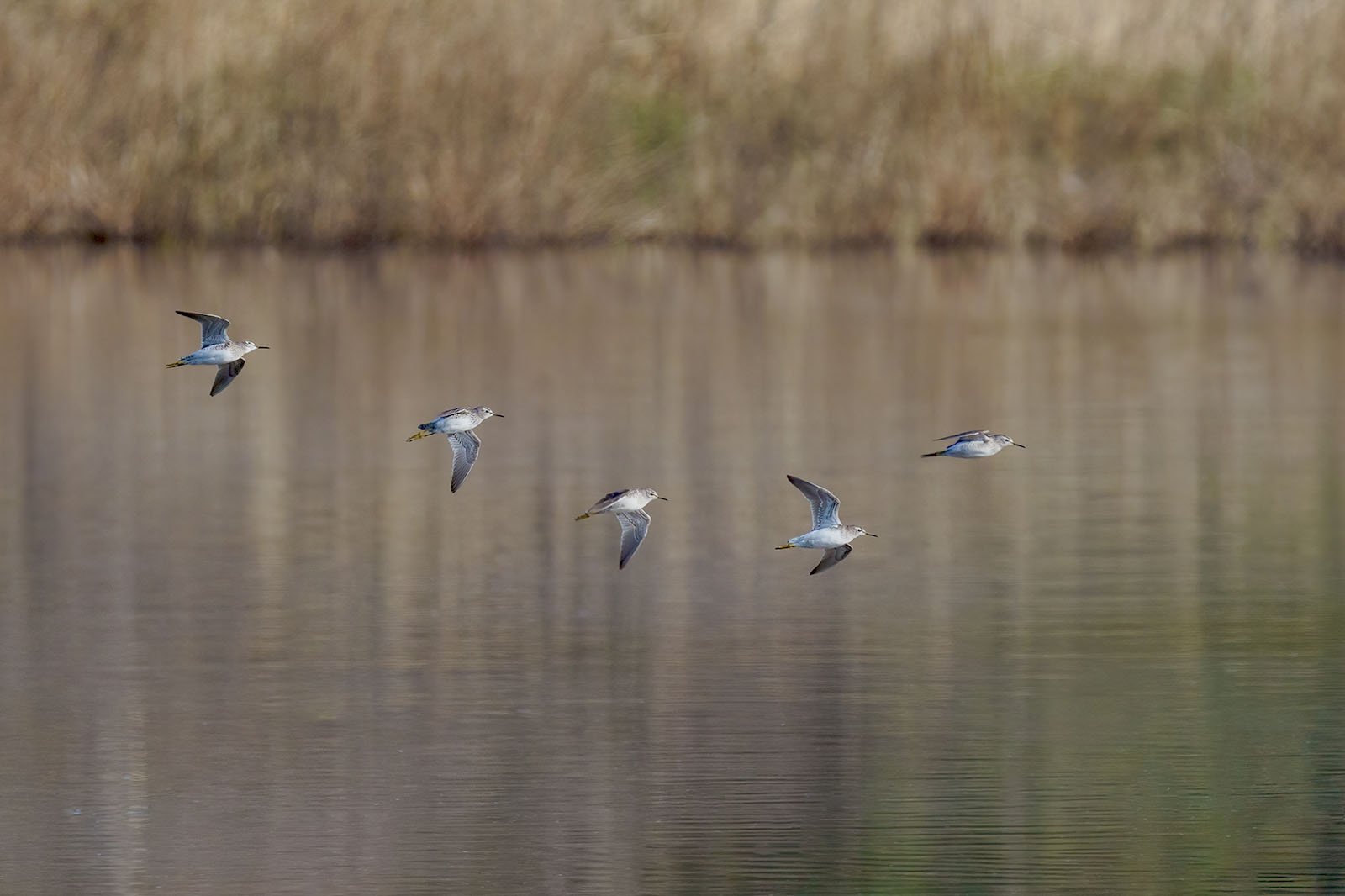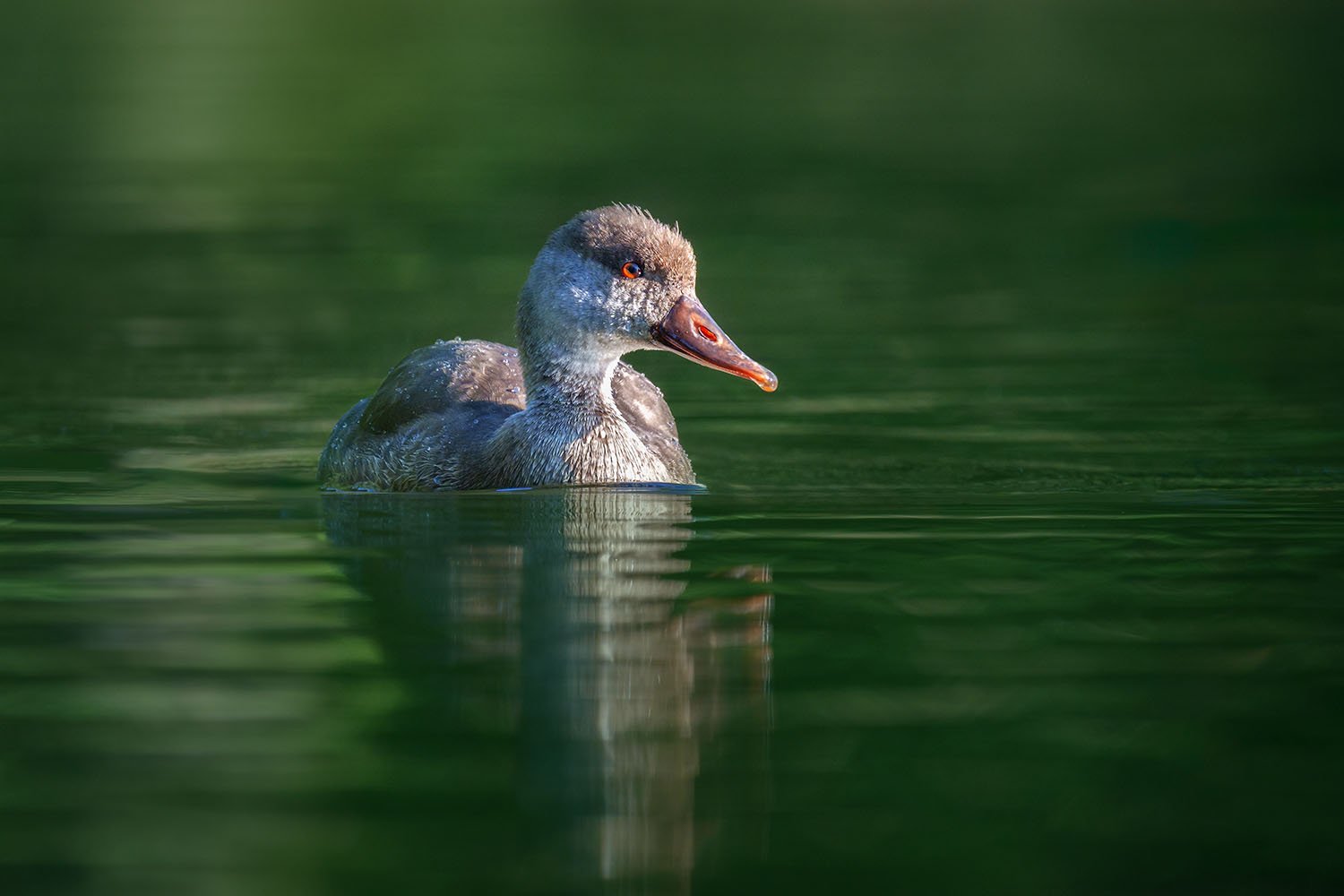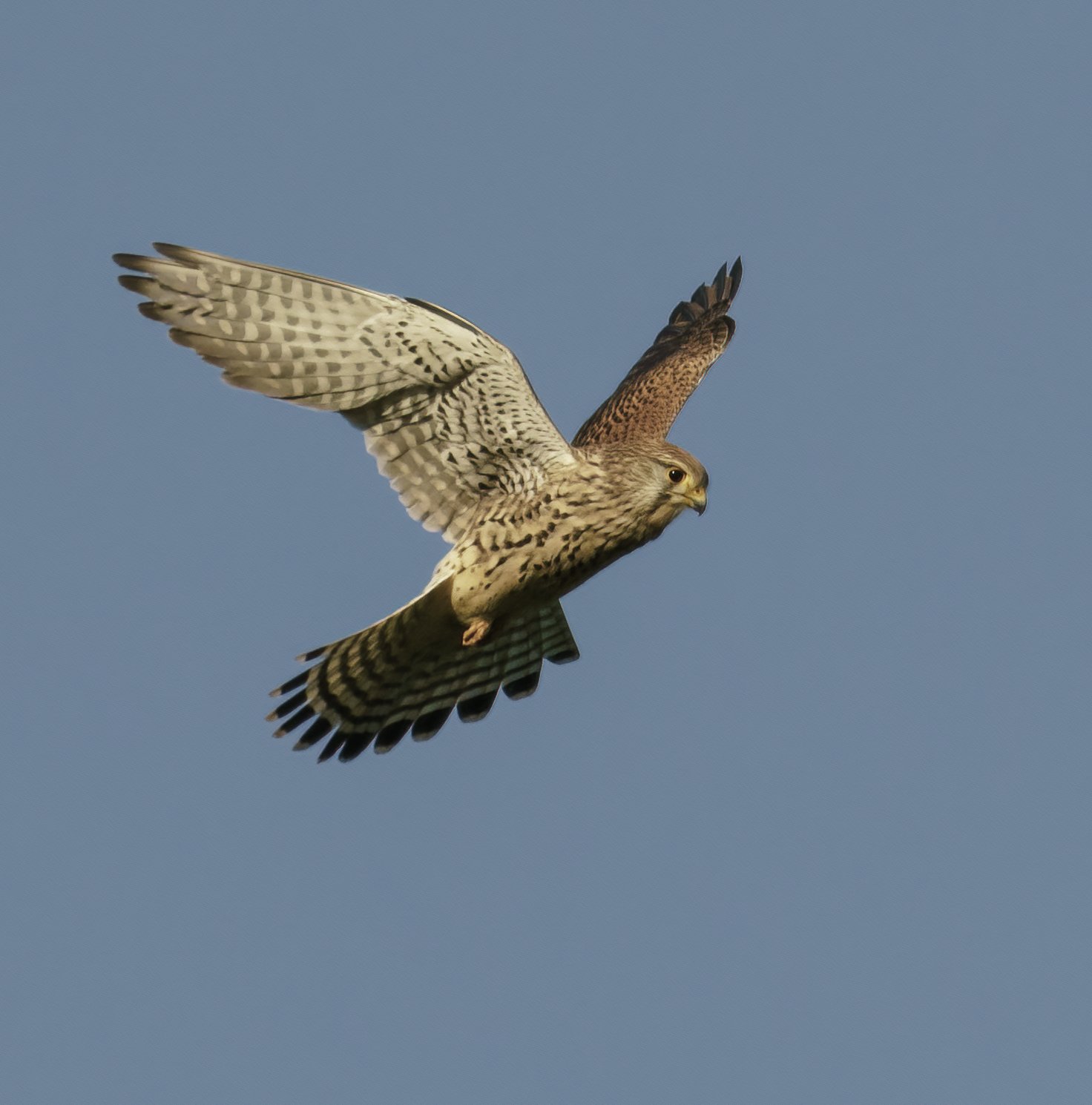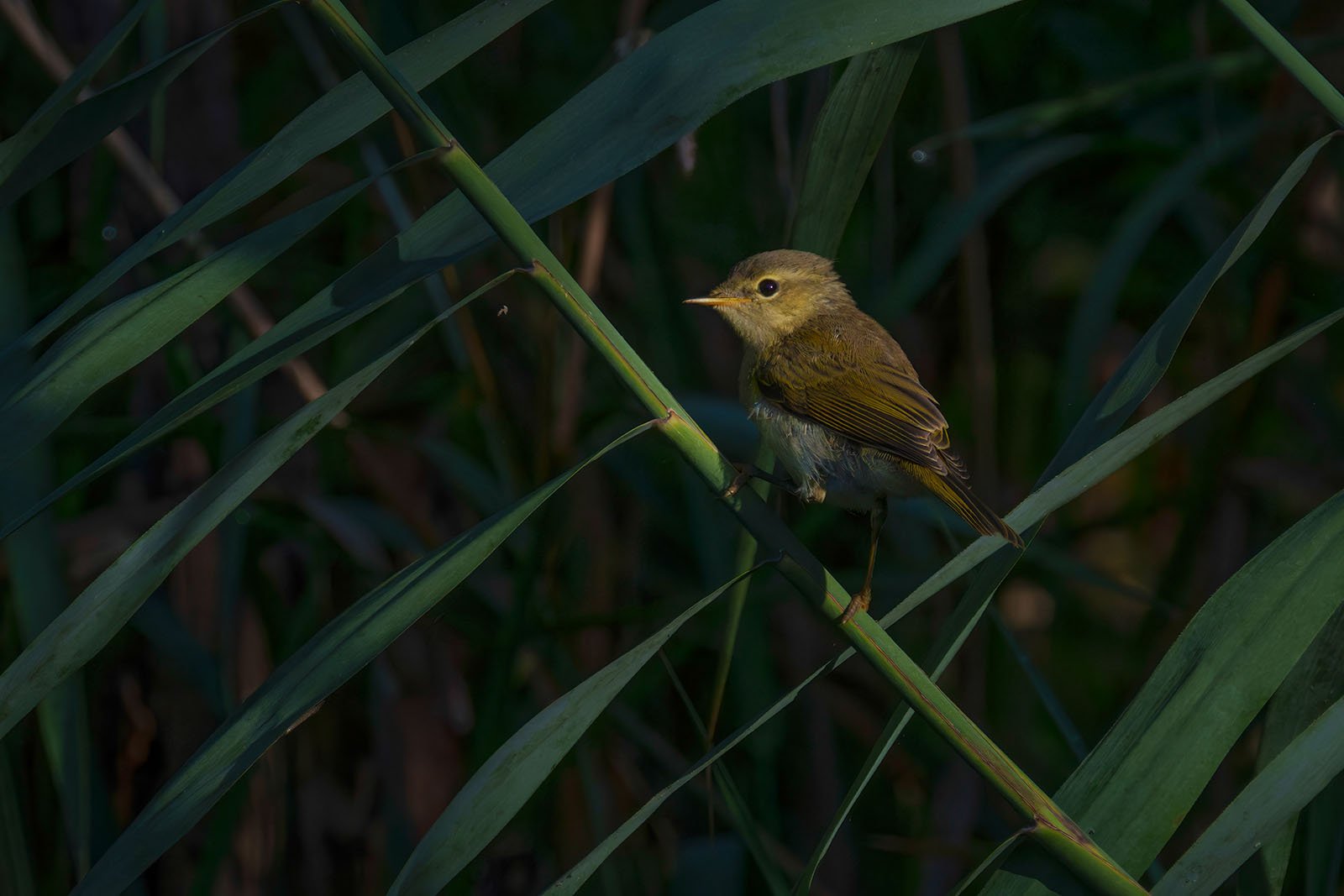Eurasian golden oriole (Oriolus oriolus)
Eurasian golden oriole (Oriolus oriolus) female
Eurasian golden oriole (Oriolus oriolus) Male
Golden Oriole (Oriolus oriolus) – The Hidden Singer in the Treetops
The Golden Oriole is a brightly colored songbird, famous for its clear, flute-like song. While the male stands out with its bright yellow feathers, the bird is often hard to spot because it prefers to stay hidden in the high branches of trees. Its combination of brilliant colors and secretive behavior makes it one of the most fascinating birds in European forests.
Quick Facts:
- Size: 22–25 cm
- Features: Males are bright yellow with black wings and tail, females are greenish-yellow with a lighter underside
- Habitat: Deciduous forests, floodplain forests, parks, and orchards, often near water
- Breeding: Builds artistic hanging nests from grass and fibers, high in trees
- Diet: Mainly insects like beetles and caterpillars, but also berries and fruits
Table of Contents
- Introduction: The Golden Oriole – A Hidden Singer in the Treetops
- Features and Appearance: How to Recognize the Golden Oriole
- Habitat and Distribution: Where the Golden Oriole Lives
- Behavior and Diet: An Insect and Fruit Eater
- Breeding: Artistic Nests in Branch Forks
- FAQ: Common Questions About the Golden Oriole
- Shortlist – Key Features
1. Introduction: The Golden Oriole – A Hidden Singer in the Treetops
The Golden Oriole is known for its clear, flute-like song, often heard from high up in the trees. Despite its bright colors, it stays well-hidden in the canopy, making it difficult to see. You are more likely to hear the oriole than to see it, especially in summer when it returns to Europe from its wintering grounds in Africa.
2. Features and Appearance: How to Recognize the Golden Oriole
The Golden Oriole has a striking appearance, especially the male, with its bright and contrasting colors.
Feathers:
- Male: The male is bright yellow, with deep black wings and a black tail, making it one of the most colorful birds in Europe.
- Female: The female is more subtle, with greenish-yellow feathers on the back and a lighter underside, helping her blend in with the leaves.
Beak: The pink to light gray beak is long and slightly curved, perfect for catching insects and picking fruit.
Eyes: The dark eyes stand out against the bright yellow face of the male, giving it a watchful, alert look. The female’s eyes are less prominent but still give her a sharp expression.
Feet: The gray feet are small but strong, helping the oriole balance easily on tree branches as it moves through the canopy.
Though the Golden Oriole is brightly colored, it remains hard to see because it spends most of its time high up in the treetops. Its distinctive song is often the first clue that an oriole is nearby.
3. Habitat and Distribution: Where the Golden Oriole Lives
The Golden Oriole prefers deciduous forests, floodplain forests, parks, and orchards, often near water. It is most comfortable in high trees, where it finds both food and shelter. The bird can be found in various parts of Europe during the summer, before migrating back to Africa in the winter.
4. Behavior and Diet: An Insect and Fruit Eater
The Golden Oriole feeds mainly on insects, especially beetles and caterpillars, which it finds among the trees. During the summer months, the bird also eats berries and fruits, which makes it a common visitor to orchards. The oriole uses its long, curved beak to pick fruit and catch insects with precision.
The bird is shy and prefers to stay high in the trees. Its clear, flute-like song is often heard before the bird itself is seen.
5. Breeding: Artistic Nests in Branch Forks
The Golden Oriole builds artistic, hanging nests made from grass and fibers, high in the trees. These nests are often well-hidden in branch forks. The breeding season starts in late spring, and the female usually lays 3–5 eggs. Both parents help feed the chicks, which leave the nest after about two weeks.
6. FAQ: Common Questions About the Golden Oriole
1. When can you hear the Golden Oriole singing?
The Golden Oriole sings mostly in late spring and summer, especially early in the morning or in the evening. Its song is clear and flute-like.
2. Where does the Golden Oriole live?
The Golden Oriole lives in deciduous forests, floodplain forests, parks, and orchards, often near water. It stays high up in the trees.
3. What does the Golden Oriole eat?
The Golden Oriole eats insects like beetles and caterpillars, and in summer, it also eats berries and fruits.
4. How can you tell the difference between the male and female?
The male is bright yellow with black wings and tail, while the female is more greenish-yellow with a lighter underside.
5. Where does the Golden Oriole build its nest?
The Golden Oriole builds hanging nests from grass and fibers, high in the trees, often in branch forks.
7. Shortlist – Key Features
- Size: 22–25 cm
- Male: Bright yellow, black wings and tail
- Female: Greenish-yellow, lighter underside
- Beak: Long, pink to light gray, slightly curved
- Eyes: Dark, alert expression
- Feet: Small, gray
- Habitat: Deciduous forests, floodplain forests, parks, orchards
- Diet: Insects, beetles, caterpillars, berries, fruits
The Golden Oriole is a fascinating bird, known for its bright colors and beautiful song. Although hard to spot, its melody and vibrant feathers make it a favorite among birdwatchers.






















